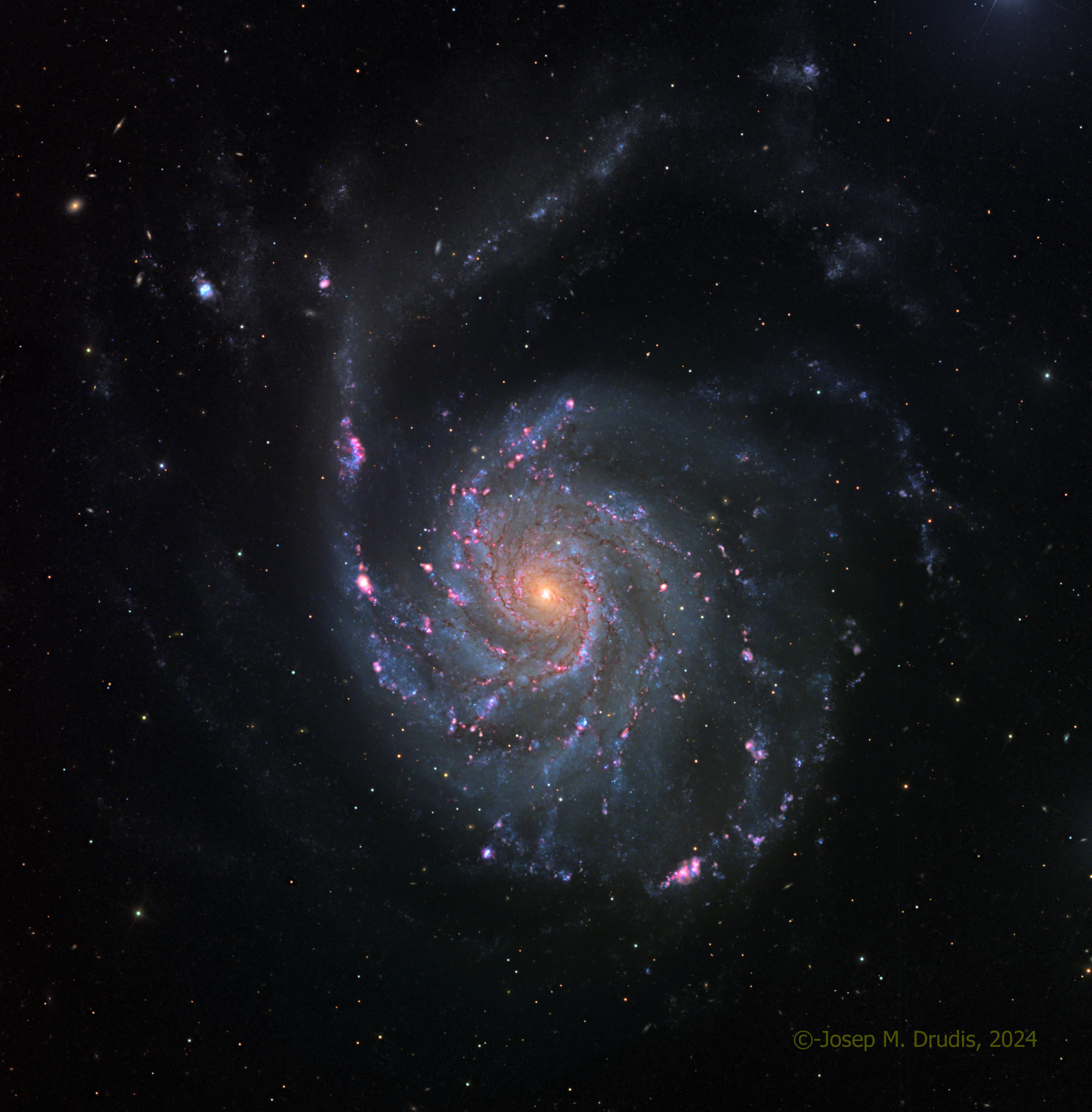 Click on the image for a full resolution version
Click on the image for a full resolution version
See this image also in Instagram
Messier 101 is a very large spiral galaxy. Its diameter, 170,000 light years, is nearly twice that of our milky Way and it contains about one trillion stars. Despite having a luminosity 30 billion times that of our Sun, the fact that this light is spread across its large angular size (low surface brightness), makes it a difficult target to spot.
Surprisingly, M101 does not seem to have a supermassive black hole in its center, thus accounting for its visible symmetry of its central bulge. The unsymmetrical external structure of M101 is due to gravitational interactions with its surrounding neighbors. In 2004, the Chandra and XMM-Newton space observatories detected an Ultra-Luminous X-ray source (called ULX-1) in one of the arms of M101. It turned out to be an X-Ray binary system one of which members was a low mass black hole (20-30 solar masses), and the second member was a massive Wolf-Rayet blue star.
Additional Information
Object
Name(s): Messier 101, M101, NGC 5457
Type: Spiral Galaxy
RA: 14h 03m 11s
Dec: +54º 21’ 06”
Constellation: Ursa Major
Size (arcmin): 30×27 arcmin
Magnitude: +7.9
Distance: 27 Mly
Image
Date: 2021-01-02 to 2021-02-06
Location: Curiosity2 Observatory, New Mexico Skies, Mayhill, NM, USA
Size (arcmin): 30×31 arcmin
Telescope: 24” (61 cm) f/6.5 Reflector
Camera: FLI PL16803 (4096x4096pix)
Guiding: Astrodon MonsterMOAG off-axis guider
Total exposure: 19h 20m (L: 5h 20m; Ha: 5h 30m; RGB: 8h 30m)
Processing: CCDStack, Photoshop CC 2021
